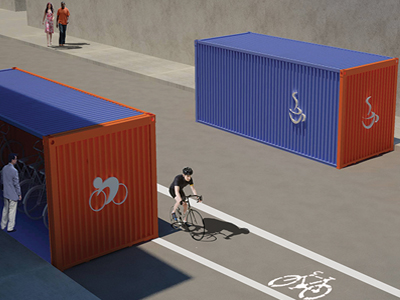|
Rapid Response Architecture
Galantini Studio and Ricardo Zurita
 |

|
The aftermath of Superstorm Sandy has spurred us to recognize that it is no longer enough to design our cities with the goal of achieving SUSTAINABILITY but rather that we need to reach beyond to design cities that achieve RESILIENCY to the effects of global climate change and rising sea levels.
Red Hook is poorly served by mass transportation with no subway service. Recognizing the youth demographics of the neighborhood and popular bicycle use, the RRA proposes a planned network of interconnected dedicated bicycle pathways. The neighborhood pathways are identified as having three distinct characters: Urban Core (Red) - pathways on central streets within the core of the neighborhood and on those streets that are outlets to other areas of Brooklyn; Green Belt (Green) - pathway that connects the parks and green spaces of the neighborhood; Waterfront Perimeter (Blue) - pathway that follows the waterfront perimeter of the neighborhood.
The most visible architectural element of the plan will be the bicycle garages used for temporary and long term storage. Along the pathways other amenities would also be present to encourage their use, including sale & repair shop, cafe kiosks, interpretative centers, newsstands, flower stands, etc. The neighborhood is still an active shipping port with the presence of linked and stacked shipping containers. Powerful in its iconic simplicity, the container is an ideal element - appropriate for its functional and poetic qualities. The flooding of the neighborhood however suggest that in the event of a future storm surge these street additions might serve another important function: as locks to prevent flood waters from penetrating deep into the community and to allow for safe corridors in the event of needed evacuation.
 |
 |
|
